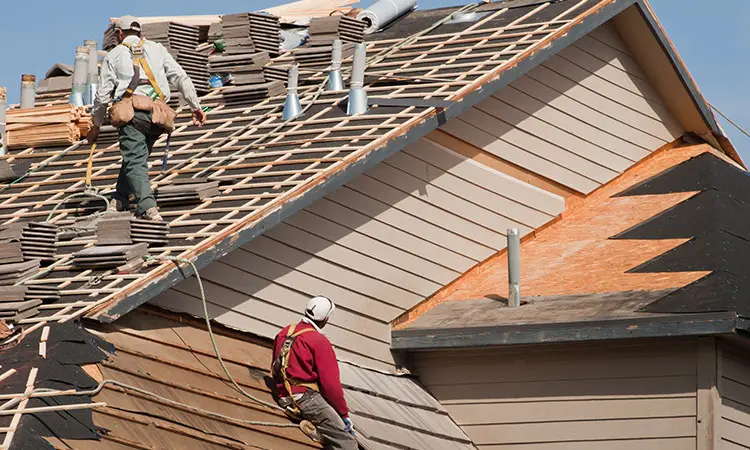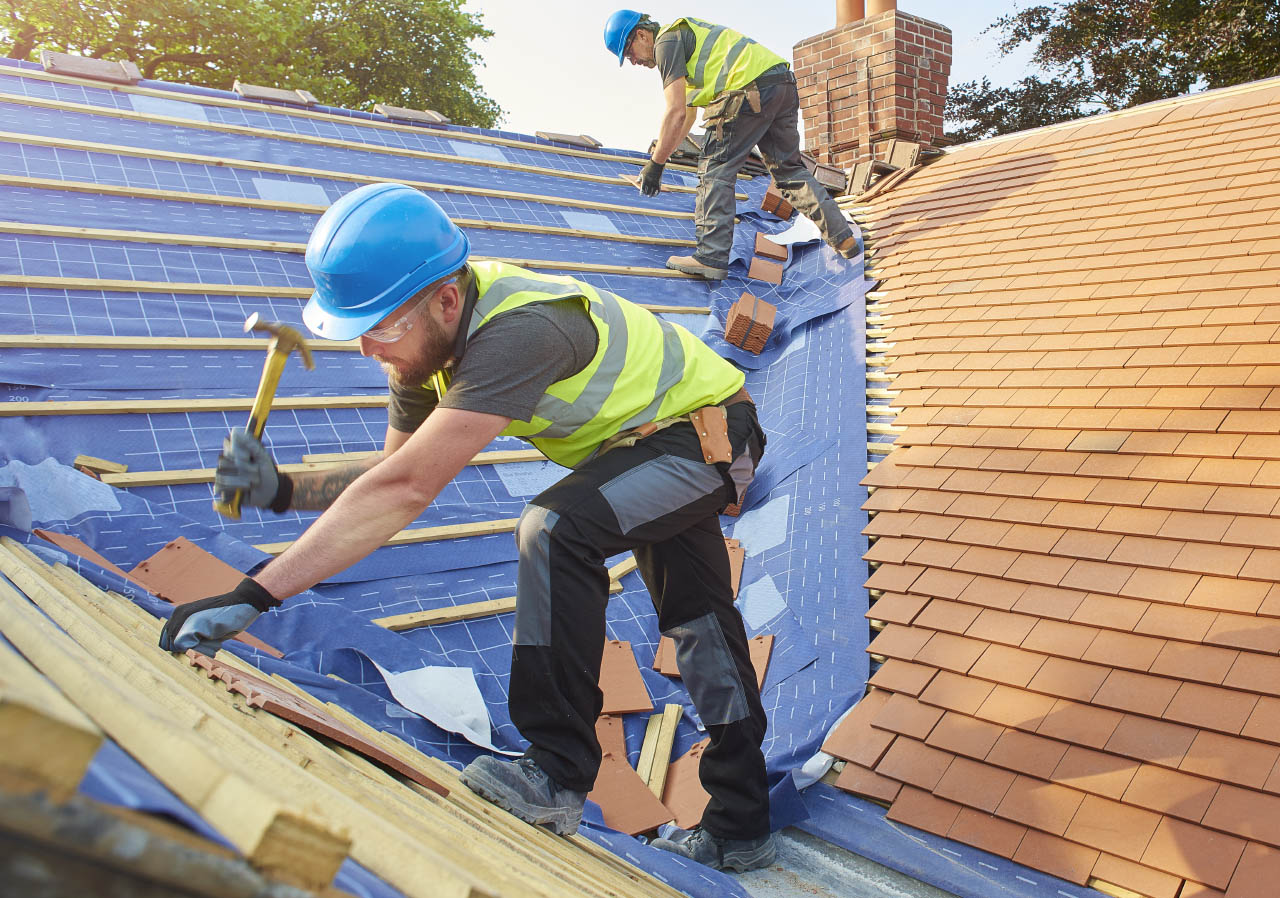Oahu Roofing: Reputable Roofing Solutions for Houses and Organizations
Checking Out the Numerous Kinds of Roofing Systems: Which One Is Best for Your Home?
When thinking about the myriad types of roofing systems offered, it is important to review how each choice straightens with your home's unique needs, consisting of environment problems, visual choices, and structural functionality. From the traditional gable roofing system that effectively channels rain to the modern level roof covering offering urban adaptability, each style presents unique benefits and obstacles.
Gable Roof Coverings
Saddleback roofs, characterized by their triangular shape and sloping sides, are a popular option amongst home owners seeking both visual allure and performance. This roof covering design properly enables effective water runoff, lowering the risk of water pooling and subsequent damage. Additionally, the high slopes develop sufficient attic space, which can be made use of for storage or perhaps exchanged living areas.
One of the key advantages of gable roof coverings is their ability to endure extreme climate conditions. The style helps in lessening wind resistance, making them specifically suitable for areas vulnerable to tornados. Furthermore, gable roofs can be built making use of a selection of materials, consisting of shingles, floor tiles, and metal, offering house owners with adaptability in design and budget plan.
From a building viewpoint, saddleback roofs can boost the aesthetic appeal of a home, offering a ageless and timeless appearance. They can complement various architectural designs, from typical to modern-day styles. Nonetheless, it is important to consider prospective disadvantages, such as the vulnerability to snow accumulation in chillier climates. Generally, gable roof coverings stay a favored choice due to their equilibrium of functionality and design, attracting a large range of homeowners.
Apartment Roofs
While usually overlooked for even more standard roof designs, level roofings offer one-of-a-kind advantages that satisfy specific building needs and modern style preferences. These roof coverings are identified by their marginal pitch, enabling for reliable use room, specifically in metropolitan environments where maximizing square footage is crucial.
One considerable benefit of level roof coverings is their convenience. They can be used as extra living rooms, such as rooftop gardens, patio areas, or solar panel installments, improving the performance of a home. Additionally, level roofings are commonly less complicated and safer to browse during upkeep, facilitating fixings and inspections without the obstacles posed by steep inclines.
Flat roofs can additionally be extra cost-efficient in regards to products and installation. With a less complex design, they frequently call for fewer resources, translating into reduced labor prices. Nonetheless, it's critical to consider water drainage and waterproofing, as flat roofings can be prone to merging water otherwise properly created.

Hip Roofings
Hip roofings stand out for their stylish layout and architectural integrity, making them a preferred option among house owners. Defined by inclines on all four sides, hip roofs supply a healthy aesthetic that complements different building designs - roof repair oahu. The balanced nature of these roofings assists to disperse weight equally, boosting security and toughness
Among the essential advantages of hip roofings is their ability to hold up against harsh climate conditions. The sloped surfaces facilitate effective water drainage and snow drainage, minimizing the risk of leakages and architectural damages. Furthermore, the style minimizes wind resistance, making hip roofings less vulnerable to wind uplift compared to other roof types.


Dropped Roofings
Shed roofs, in comparison to the complexity of hip roofings, use a streamlined and minimal design that interest contemporary looks. Defined by a single sloping surface area, dropped roofing systems are often made use of in contemporary style, garden sheds, and other functional frameworks. This simpleness not only improves visual allure however additionally enables reliable water overflow, making them appropriate for various climates.
Among the visit this site key advantages of shed roofs is their cost-effectiveness. With fewer materials required and an uncomplicated installation procedure, house owners can conserve both money and time. The layout likewise permits the incorporation of huge windows or skylights, promoting all-natural light and creating sizable insides.
Nevertheless, it is vital to think about the possible disadvantages, including limited insulation options and the demand for careful style to stay clear of excessive heat buildup. Furthermore, shed roofings might not blend flawlessly with traditional architecture, which might be a problem for some home owners.
Ultimately, shed roof coverings offer a fashionable and sensible roof covering remedy for those looking for modernity and performance. When picking use this link a roofing kind, reviewing individual practical needs and visual preferences will guide house owners to the most effective option for their distinct needs.
Mansard Roofs
Mansard roofings, defined by their distinctive four-sided style, are a trademark of French architecture that integrates sophistication with functionality. This building design includes 2 inclines on each side, with the lower slope being steeper than the upper one. The one-of-a-kind configuration permits extra space in the top levels, making it an ideal option for property owners seeking to make the most of functional location without broadening the structure's footprint.
Among the substantial benefits of a mansard roofing is its versatility. It can be adapted to numerous architectural styles, from conventional to modern, boosting the aesthetic allure of any type of home. Additionally, the sufficient area created under the roofing system can conveniently accommodate dormer home windows, which permit all-natural light and ventilation, further improving the comfort of the living location.
However, possible property owners must take into consideration the maintenance requirements linked with mansard roof coverings. The why not try this out steep inclines can result in raised wear from weather condition exposure, requiring normal maintenances. Furthermore, setup prices may be higher compared to less complex roof designs as a result of the complexity of building. Inevitably, a mansard roof can be an excellent selection for those prioritizing style and space.
Verdict
Each roof style presents distinct advantages, such as the performance of gable roofs, the contemporary allure of shed roof coverings, and the stability of hip roofs. Flat roofs supply usefulness for metropolitan settings, while mansard roof coverings offer additional living area despite greater setup expenses.
From the traditional gable roof that successfully channels rain to the modern-day flat roof covering offering metropolitan adaptability, each design provides distinct benefits and challenges (roof repair oahu). Furthermore, the style minimizes wind resistance, making hip roof coverings less susceptible to wind uplift compared to various other roof covering types
Shed roof coverings, in contrast to the intricacy of hip roofing systems, use a streamlined and minimal layout that charms to modern visual appeals. Each roof style provides one-of-a-kind advantages, such as the performance of gable roof coverings, the modern-day appeal of shed roofings, and the security of hip roofs. Flat roof coverings offer practicality for city settings, while mansard roofings provide additional living space regardless of greater setup costs.